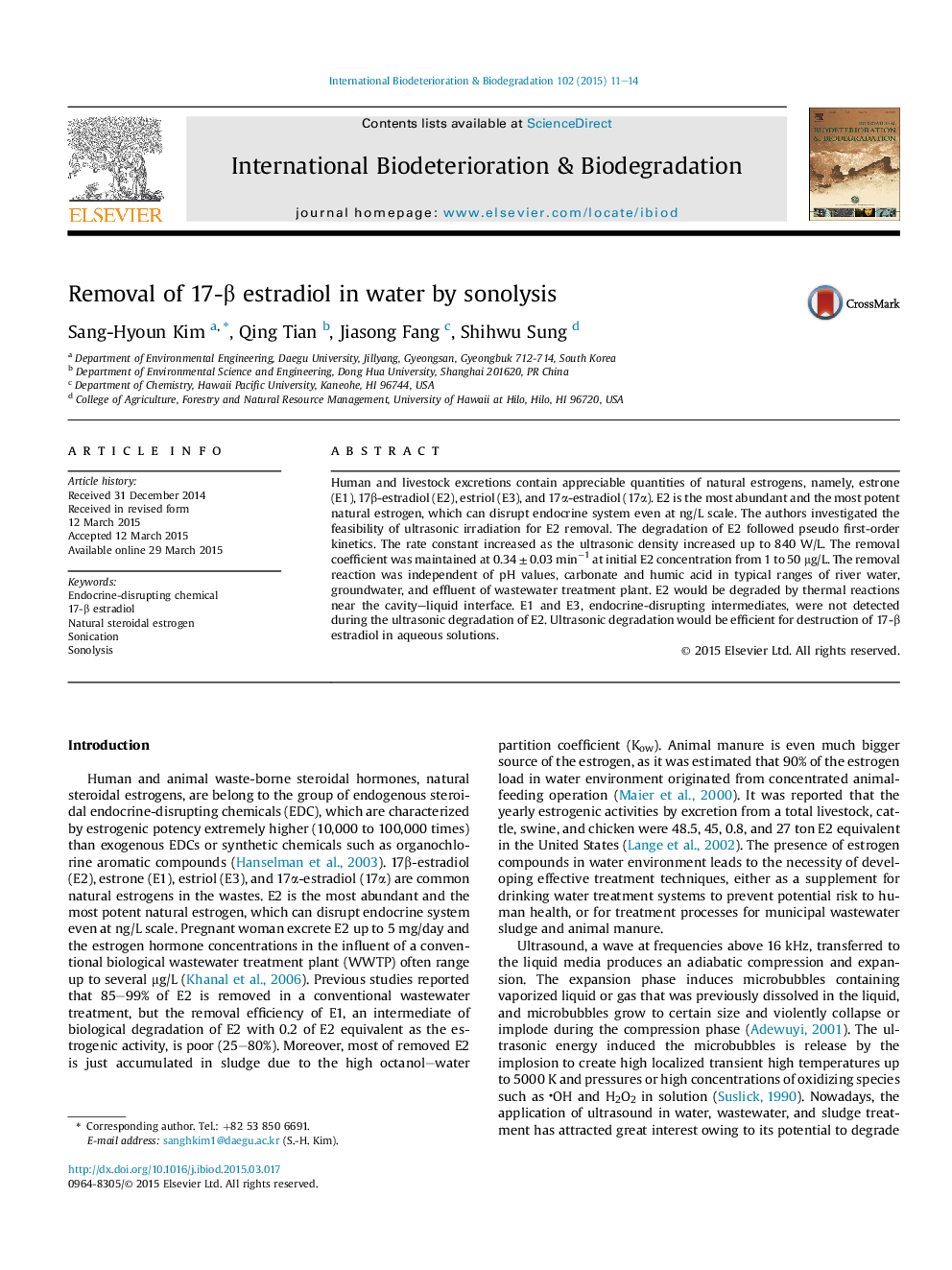| کد مقاله | کد نشریه | سال انتشار | مقاله انگلیسی | نسخه تمام متن |
|---|---|---|---|---|
| 4364343 | 1616315 | 2015 | 4 صفحه PDF | دانلود رایگان |

• Estradiol, natural endocrine-disrupting chemical, was degraded by ultrasound.
• Thermal decomposition is the probable degradation mechanism.
• Estradiol concentration, pH, carbonate did not affect the degradation kinetics.
Human and livestock excretions contain appreciable quantities of natural estrogens, namely, estrone (E1), 17β-estradiol (E2), estriol (E3), and 17α-estradiol (17α). E2 is the most abundant and the most potent natural estrogen, which can disrupt endocrine system even at ng/L scale. The authors investigated the feasibility of ultrasonic irradiation for E2 removal. The degradation of E2 followed pseudo first-order kinetics. The rate constant increased as the ultrasonic density increased up to 840 W/L. The removal coefficient was maintained at 0.34 ± 0.03 min−1 at initial E2 concentration from 1 to 50 μg/L. The removal reaction was independent of pH values, carbonate and humic acid in typical ranges of river water, groundwater, and effluent of wastewater treatment plant. E2 would be degraded by thermal reactions near the cavity–liquid interface. E1 and E3, endocrine-disrupting intermediates, were not detected during the ultrasonic degradation of E2. Ultrasonic degradation would be efficient for destruction of 17-β estradiol in aqueous solutions.
Journal: International Biodeterioration & Biodegradation - Volume 102, August 2015, Pages 11–14